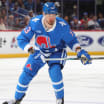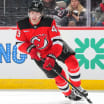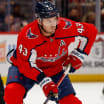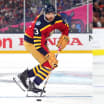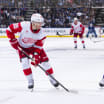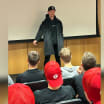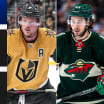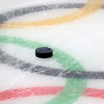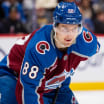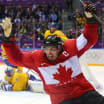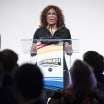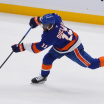The pair, wearing Washington Capitals sweaters, received a standing ovation as they dropped pucks between Washington captain Alex Ovechkin and Ottawa Senators defenseman Mark Borowiecki.
O'Ree wore a Capitals jersey with his No. 22 on it, and Lewis wore No. 65, commemorating the 1965 March on Selma, Alabama, an event he played a prominent role in.
"It means a great deal to be here with this young man," the 79-year-old Georgia congressman said of the 83-year-old O'Ree. "This is black history for hockey and black history for America and it's so good that the Capitals would take the time to remember, celebrate the real meaning of black history.
"Sports has made an unbelievable contribution to the distance we've come, the progress we've made. If it hadn't been for sports, I don't know what we'd be as a nation, and as a people."
O'Ree was the first black hockey player in the NHL, making his debut Jan. 18, 1958, with the Boston Bruins. He was inducted into the Hockey Hall of Fame in 2018 in the Builders category.
As the NHL's diversity ambassador, O'Ree travels across North America helping to introduce boys and girls of diverse backgrounds to unique hockey experiences.
"These kids know more about me than I know about myself," he said. "The internet ... you've got Google. Some of the places I go they know my stats, when I played, how long I played and so on and so forth. They take an interest."
In another Black History Month initiative, the Capitals and the Embassy of Canada are hosting the National Hockey League's Black Hockey History Tour, a uniquely curated mobile museum, through Feb. 27.
The 525-square-foot museum, presented by American Legacy, highlights 200 years of black achievement in hockey. Exhibits feature founders, trailblazers, history makers and Stanley Cup champions, and look ahead to the next generation of young stars, NHL officials, broadcasters, and women in the game.
"I was very impressed, what they've done with the museum," O'Ree said. "They've done a lot of research. They've gone back. They've got pictures from the 1880s when the Coloured Hockey League started and coming up to the present."
